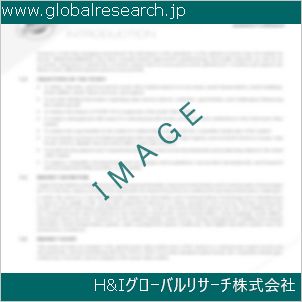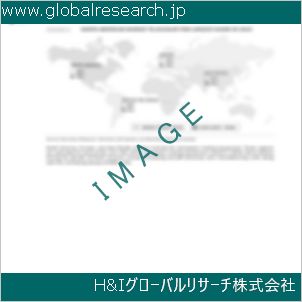1 Fine Dust Sensor Market Overview
1.1 Product Definition
1.2 Fine Dust Sensor Segment by Type
1.2.1 Global Fine Dust Sensor Market Value Growth Rate Analysis by Type 2022 VS 2029
1.2.2 The Sensor Outputs PM10
1.2.3 The Sensor Outputs PM2.5
1.3 Fine Dust Sensor Segment by Application
1.3.1 Global Fine Dust Sensor Market Value Growth Rate Analysis by Application: 2022 VS 2029
1.3.2 Agriculture
1.3.3 Environmental Monitoring
1.3.4 Industry
1.3.5 Medical Treatment
1.3.6 Other
1.4 Global Market Growth Prospects
1.4.1 Global Fine Dust Sensor Production Value Estimates and Forecasts (2018-2029)
1.4.2 Global Fine Dust Sensor Production Capacity Estimates and Forecasts (2018-2029)
1.4.3 Global Fine Dust Sensor Production Estimates and Forecasts (2018-2029)
1.4.4 Global Fine Dust Sensor Market Average Price Estimates and Forecasts (2018-2029)
1.5 Assumptions and Limitations
2 Market Competition by Manufacturers
2.1 Global Fine Dust Sensor Production Market Share by Manufacturers (2018-2023)
2.2 Global Fine Dust Sensor Production Value Market Share by Manufacturers (2018-2023)
2.3 Global Key Players of Fine Dust Sensor, Industry Ranking, 2021 VS 2022 VS 2023
2.4 Global Fine Dust Sensor Market Share by Company Type (Tier 1, Tier 2 and Tier 3)
2.5 Global Fine Dust Sensor Average Price by Manufacturers (2018-2023)
2.6 Global Key Manufacturers of Fine Dust Sensor, Manufacturing Base Distribution and Headquarters
2.7 Global Key Manufacturers of Fine Dust Sensor, Product Offered and Application
2.8 Global Key Manufacturers of Fine Dust Sensor, Date of Enter into This Industry
2.9 Fine Dust Sensor Market Competitive Situation and Trends
2.9.1 Fine Dust Sensor Market Concentration Rate
2.9.2 Global 5 and 10 Largest Fine Dust Sensor Players Market Share by Revenue
2.10 Mergers & Acquisitions, Expansion
3 Fine Dust Sensor Production by Region
3.1 Global Fine Dust Sensor Production Value Estimates and Forecasts by Region: 2018 VS 2022 VS 2029
3.2 Global Fine Dust Sensor Production Value by Region (2018-2029)
3.2.1 Global Fine Dust Sensor Production Value Market Share by Region (2018-2023)
3.2.2 Global Forecasted Production Value of Fine Dust Sensor by Region (2024-2029)
3.3 Global Fine Dust Sensor Production Estimates and Forecasts by Region: 2018 VS 2022 VS 2029
3.4 Global Fine Dust Sensor Production by Region (2018-2029)
3.4.1 Global Fine Dust Sensor Production Market Share by Region (2018-2023)
3.4.2 Global Forecasted Production of Fine Dust Sensor by Region (2024-2029)
3.5 Global Fine Dust Sensor Market Price Analysis by Region (2018-2023)
3.6 Global Fine Dust Sensor Production and Value, Year-over-Year Growth
3.6.1 North America Fine Dust Sensor Production Value Estimates and Forecasts (2018-2029)
3.6.2 Europe Fine Dust Sensor Production Value Estimates and Forecasts (2018-2029)
3.6.3 China Fine Dust Sensor Production Value Estimates and Forecasts (2018-2029)
3.6.4 Japan Fine Dust Sensor Production Value Estimates and Forecasts (2018-2029)
3.6.5 South Korea Fine Dust Sensor Production Value Estimates and Forecasts (2018-2029)
4 Fine Dust Sensor Consumption by Region
4.1 Global Fine Dust Sensor Consumption Estimates and Forecasts by Region: 2018 VS 2022 VS 2029
4.2 Global Fine Dust Sensor Consumption by Region (2018-2029)
4.2.1 Global Fine Dust Sensor Consumption by Region (2018-2023)
4.2.2 Global Fine Dust Sensor Forecasted Consumption by Region (2024-2029)
4.3 North America
4.3.1 North America Fine Dust Sensor Consumption Growth Rate by Country: 2018 VS 2022 VS 2029
4.3.2 North America Fine Dust Sensor Consumption by Country (2018-2029)
4.3.3 United States
4.3.4 Canada
4.4 Europe
4.4.1 Europe Fine Dust Sensor Consumption Growth Rate by Country: 2018 VS 2022 VS 2029
4.4.2 Europe Fine Dust Sensor Consumption by Country (2018-2029)
4.4.3 Germany
4.4.4 France
4.4.5 U.K.
4.4.6 Italy
4.4.7 Russia
4.5 Asia Pacific
4.5.1 Asia Pacific Fine Dust Sensor Consumption Growth Rate by Region: 2018 VS 2022 VS 2029
4.5.2 Asia Pacific Fine Dust Sensor Consumption by Region (2018-2029)
4.5.3 China
4.5.4 Japan
4.5.5 South Korea
4.5.6 China Taiwan
4.5.7 Southeast Asia
4.5.8 India
4.6 Latin America, Middle East & Africa
4.6.1 Latin America, Middle East & Africa Fine Dust Sensor Consumption Growth Rate by Country: 2018 VS 2022 VS 2029
4.6.2 Latin America, Middle East & Africa Fine Dust Sensor Consumption by Country (2018-2029)
4.6.3 Mexico
4.6.4 Brazil
4.6.5 Turkey
5 Segment by Type
5.1 Global Fine Dust Sensor Production by Type (2018-2029)
5.1.1 Global Fine Dust Sensor Production by Type (2018-2023)
5.1.2 Global Fine Dust Sensor Production by Type (2024-2029)
5.1.3 Global Fine Dust Sensor Production Market Share by Type (2018-2029)
5.2 Global Fine Dust Sensor Production Value by Type (2018-2029)
5.2.1 Global Fine Dust Sensor Production Value by Type (2018-2023)
5.2.2 Global Fine Dust Sensor Production Value by Type (2024-2029)
5.2.3 Global Fine Dust Sensor Production Value Market Share by Type (2018-2029)
5.3 Global Fine Dust Sensor Price by Type (2018-2029)
6 Segment by Application
6.1 Global Fine Dust Sensor Production by Application (2018-2029)
6.1.1 Global Fine Dust Sensor Production by Application (2018-2023)
6.1.2 Global Fine Dust Sensor Production by Application (2024-2029)
6.1.3 Global Fine Dust Sensor Production Market Share by Application (2018-2029)
6.2 Global Fine Dust Sensor Production Value by Application (2018-2029)
6.2.1 Global Fine Dust Sensor Production Value by Application (2018-2023)
6.2.2 Global Fine Dust Sensor Production Value by Application (2024-2029)
6.2.3 Global Fine Dust Sensor Production Value Market Share by Application (2018-2029)
6.3 Global Fine Dust Sensor Price by Application (2018-2029)
7 Key Companies Profiled
7.1 Cubic Sensor and Instrument
7.1.1 Cubic Sensor and Instrument Fine Dust Sensor Corporation Information
7.1.2 Cubic Sensor and Instrument Fine Dust Sensor Product Portfolio
7.1.3 Cubic Sensor and Instrument Fine Dust Sensor Production, Value, Price and Gross Margin (2018-2023)
7.1.4 Cubic Sensor and Instrument Main Business and Markets Served
7.1.5 Cubic Sensor and Instrument Recent Developments/Updates
7.2 Siemens
7.2.1 Siemens Fine Dust Sensor Corporation Information
7.2.2 Siemens Fine Dust Sensor Product Portfolio
7.2.3 Siemens Fine Dust Sensor Production, Value, Price and Gross Margin (2018-2023)
7.2.4 Siemens Main Business and Markets Served
7.2.5 Siemens Recent Developments/Updates
7.3 Dr. Fodisch
7.3.1 Dr. Fodisch Fine Dust Sensor Corporation Information
7.3.2 Dr. Fodisch Fine Dust Sensor Product Portfolio
7.3.3 Dr. Fodisch Fine Dust Sensor Production, Value, Price and Gross Margin (2018-2023)
7.3.4 Dr. Fodisch Main Business and Markets Served
7.3.5 Dr. Fodisch Recent Developments/Updates
7.4 Omron Electronic Components
7.4.1 Omron Electronic Components Fine Dust Sensor Corporation Information
7.4.2 Omron Electronic Components Fine Dust Sensor Product Portfolio
7.4.3 Omron Electronic Components Fine Dust Sensor Production, Value, Price and Gross Margin (2018-2023)
7.4.4 Omron Electronic Components Main Business and Markets Served
7.4.5 Omron Electronic Components Recent Developments/Updates
7.5 Candle
7.5.1 Candle Fine Dust Sensor Corporation Information
7.5.2 Candle Fine Dust Sensor Product Portfolio
7.5.3 Candle Fine Dust Sensor Production, Value, Price and Gross Margin (2018-2023)
7.5.4 Candle Main Business and Markets Served
7.5.5 Candle Recent Developments/Updates
7.6 CEM Solutions
7.6.1 CEM Solutions Fine Dust Sensor Corporation Information
7.6.2 CEM Solutions Fine Dust Sensor Product Portfolio
7.6.3 CEM Solutions Fine Dust Sensor Production, Value, Price and Gross Margin (2018-2023)
7.6.4 CEM Solutions Main Business and Markets Served
7.6.5 CEM Solutions Recent Developments/Updates
7.7 Zhengzhou Winsen Electronics Technology
7.7.1 Zhengzhou Winsen Electronics Technology Fine Dust Sensor Corporation Information
7.7.2 Zhengzhou Winsen Electronics Technology Fine Dust Sensor Product Portfolio
7.7.3 Zhengzhou Winsen Electronics Technology Fine Dust Sensor Production, Value, Price and Gross Margin (2018-2023)
7.7.4 Zhengzhou Winsen Electronics Technology Main Business and Markets Served
7.7.5 Zhengzhou Winsen Electronics Technology Recent Developments/Updates
7.8 ALLNET
7.8.1 ALLNET Fine Dust Sensor Corporation Information
7.8.2 ALLNET Fine Dust Sensor Product Portfolio
7.8.3 ALLNET Fine Dust Sensor Production, Value, Price and Gross Margin (2018-2023)
7.8.4 ALLNET Main Business and Markets Served
7.7.5 ALLNET Recent Developments/Updates
8 Industry Chain and Sales Channels Analysis
8.1 Fine Dust Sensor Industry Chain Analysis
8.2 Fine Dust Sensor Key Raw Materials
8.2.1 Key Raw Materials
8.2.2 Raw Materials Key Suppliers
8.3 Fine Dust Sensor Production Mode & Process
8.4 Fine Dust Sensor Sales and Marketing
8.4.1 Fine Dust Sensor Sales Channels
8.4.2 Fine Dust Sensor Distributors
8.5 Fine Dust Sensor Customers
9 Fine Dust Sensor Market Dynamics
9.1 Fine Dust Sensor Industry Trends
9.2 Fine Dust Sensor Market Drivers
9.3 Fine Dust Sensor Market Challenges
9.4 Fine Dust Sensor Market Restraints
10 Research Finding and Conclusion
11 Methodology and Data Source
11.1 Methodology/Research Approach
11.1.1 Research Programs/Design
11.1.2 Market Size Estimation
11.1.3 Market Breakdown and Data Triangulation
11.2 Data Source
11.2.1 Secondary Sources
11.2.2 Primary Sources
11.3 Author List
11.4 Disclaimer
| ※参考情報 細塵センサー(Fine Dust Sensor)は、大気中の微細な粒子状物質を測定するための装置であり、最近では環境問題や健康への影響が注目される中で、その重要性が増しています。本章では、細塵センサーの概念や定義、特徴、種類、用途、関連技術について詳しく述べます。 まず、細塵センサーの定義から始めましょう。細塵センサーとは、PM2.5やPM10などの微細な粒子状物質をリアルタイムで測定し、その濃度を数値化する機器のことを指します。PMとは「Particulate Matter」の略で、空気中に浮遊する微小な固体または液体の粒子を示しています。PM2.5は直径が2.5マイクロメートル以下の粒子、PM10は直径が10マイクロメートル以下の粒子を指し、これらの粒子は呼吸器系に深刻な影響を及ぼすことがあるため、特に注意が必要です。 細塵センサーの特徴には、精度や応答速度、サイズ、取り扱いやすさが含まれます。最新の技術を使用した細塵センサーは、高い測定精度を持ちつつ、小型化が進んでいるため、様々な環境での利用が可能です。また、リアルタイムでデータを提供することができるため、特定の時刻や場所の空気質を的確に把握することができます。加えて、使いやすさも重要な要素で、例えば、スマートフォンと連携してデータを視覚化したり、異常を通知したりする機能を持つセンサーも増えてきました。 細塵センサーの種類には、主にレーザー散乱式、光散乱式、電気的原理に基づくものなどがあります。レーザー散乱式は、高精度な測定が可能で、粒子のサイズや濃度を詳細に分析することができます。この方式は、レーザー光を用いて空気中の粒子に当て、その散乱光を検出するという仕組みです。一方、光散乱式は、同様に光を利用しますが、よりシンプルな構造でコストが低いため、多くの工業用や家庭用製品に利用されています。電気的原理を利用したものは、主に電気抵抗の変化を測定するもので、特に微細な粒子の存在を検出するのに適しています。 細塵センサーの用途は多岐にわたります。まず、環境モニタリングが挙げられます。都市部や工業地帯では、大気質を監視し、汚染の状況を把握するための基盤コスト削減に役立っています。また、家庭用空気清浄機やエアコンに組み込まれ、室内の空気質を適切に維持するためのデータ提供の役割を担っています。加えて、健康管理アプリやウェアラブルデバイスに組み込まれることも増えており、個人の健康リスクを低減するための情報を提供します。 細塵センサーに関連する技術としては、IoT(Internet of Things)やビッグデータ解析などが重要です。IoT技術を活用することで、細塵センサーからのデータをクラウド上で集約し、多くのユーザーがアクセスできるようになります。これにより、空気質に関する広範なデータベースが形成され、都市全体の空気質を可視化することができるようになります。また、ビッグデータ解析によって、過去の環境データをもとに将来の環境状況を予測することも可能になります。 さらに、細塵センサーの開発には、材料工学やナノテクノロジーも関与しています。新しい素材の開発により、センサーの感度や寿命が向上し、より精密な測定が可能となっています。ナノテクノロジーを利用したセンサーは、より小型化され、コスト削減に寄与することができます。 細塵センサーは、今後ますます重要性を増していくであろう技術です。世界的にみても、大気汚染が健康に与える影響は無視できないものとなってきており、それに対処するための手段として細塵センサーがますます活用されるでしょう。都市計画や環境政策の策定においても、そのデータは非常に価値のあるものとなります。特に発展途上国においては、急激な都市化が進む中で、細塵センサーを用いた環境モニタリングは不可欠な要素となるでしょう。 最後に、細塵センサーの普及に向けた課題も認識しておかなければなりません。センサーの精度や信頼性、安全性などの基準が整っていない場合、得られたデータに対する信頼性が損なわれる可能性があります。また、ユーザーがデータを適切に解釈し利用できるようにするための教育や普及活動も重要です。情報の透明性を確保し、一般市民が自らの健康や環境に対する意識を高めることが、細塵センサーの効率的な活用につながるでしょう。 以上のように、細塵センサーは空気質監視や健康リスク管理、環境政策など多岐にわたる分野で重要な役割を果たす技術です。引き続き、技術の進展とともにその利用が拡大していくことが期待されています。 |
❖ 免責事項 ❖
http://www.globalresearch.jp/disclaimer












